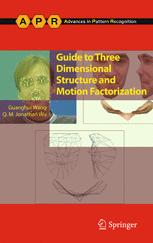

Most ebook files are in PDF format, so you can easily read them using various software such as Foxit Reader or directly on the Google Chrome browser.
Some ebook files are released by publishers in other formats such as .awz, .mobi, .epub, .fb2, etc. You may need to install specific software to read these formats on mobile/PC, such as Calibre.
Please read the tutorial at this link: https://ebookbell.com/faq
We offer FREE conversion to the popular formats you request; however, this may take some time. Therefore, right after payment, please email us, and we will try to provide the service as quickly as possible.
For some exceptional file formats or broken links (if any), please refrain from opening any disputes. Instead, email us first, and we will try to assist within a maximum of 6 hours.
EbookBell Team

5.0
38 reviewsThe problem of structure and motion recovery from image sequences is an important theme in computer vision. Considerable progress has been made in this field during the past two decades, resulting in successful applications in robot navigation, augmented reality, industrial inspection, medical image analysis, and digital entertainment, among other areas. However, many of these methods work only for rigid objects and static scenes. The study of non-rigid structure from motion is not only of academic significance, but also has important practical applications in real-world, nonrigid or dynamic scenarios, such as human facial expressions and moving vehicles.
This practical guide/reference provides a comprehensive overview of Euclidean structure and motion recovery, with a specific focus on factorization-based algorithms. The book discusses the latest research in this field, including the extension of the factorization algorithm to recover the structure of non-rigid objects, and presents some new algorithms developed by the authors. Readers require no significant knowledge of computer vision, although some background on projective geometry and matrix computation would be beneficial.
Topics and features:
This unique text offers practical guidance in real applications and implementations of 3D modeling systems for practitioners in computer vision and pattern recognition, as well as serving as an invaluable source of new algorithms and methodologies for structure and motion recovery for graduate students and researchers.
Dr. Guanghui Wang is a Research Fellow at the Department of Systems Design Engineering at the University of Waterloo, Ontario, Canada.
Dr. Jonathan Wu is Professor of Automotive Sensors and Sensing Systems at the Department of Electrical and Computer Engineering at the University of Windsor, Ontario, Canada.